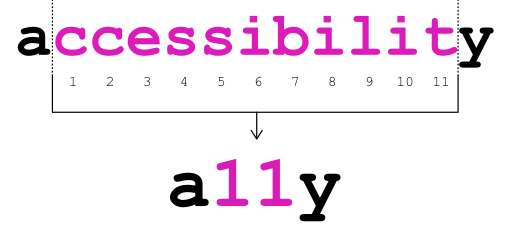In website design, the backgrounds we choose are foundational to the overall effect. They serve as the canvas for our content and the primary visual cue for our brand’s identity. As a biophilic design expert, I focus on integrating natural elements to enhance this digital environment. A common and effective choice is the use of mountain backgrounds. These images provide a sense of “Prospect,” a core biophilic principle, which gives the user a feeling of safety, breadth, and calm.
However, the critical question is not just what image to use, but how to present it. This brings us to a primary technical and aesthetic debate: parallax versus static backgrounds.
- Parallax Background: This is a dynamic technique. As a user scrolls down the page, the mountain background moves at a slower rate than the foreground content (the text and other images). This creates a compelling illusion of 3D depth, making the website feel more interactive and layered.
- Static Background: This is a fixed image. As the user scrolls, the content moves over the background, which stays in one place. This creates a “window” effect, where the mountain background is a stable, unchanging view.
The choice between these website backgrounds is critical. The hypothesis is that one of these presentation styles will lead to superior user engagement. But we must define “engagement” through clear, measurable data. For this analysis, engagement is not just a vague feeling. It is a set of key performance indicators (KPIs):
- Time on Page / Dwell Time: How long do users stay?
- Scroll Depth: How far down the page do they explore?
- Bounce Rate: How many users leave after viewing only one page?
- User-Reported Enjoyment: Do users find the experience pleasant?
- Conversion Rate: Do users take the desired action, such as clicking a “Contact” button?
In this article, we will analyze which of these backgrounds—the dynamic parallax or the stable static—truly performs better when measured against these technical and behavioral metrics. The biophilic goal is to use nature to improve focus and reduce stress, and our choice must support this mission without compromise.
Table of Contents
The Case for Parallax: Immersion, Storytelling, and Perceived Value

Parallax backgrounds have a distinct and immediate advantage: they are visually interesting and grab attention. The technique’s primary strength lies in its ability to transform a flat, two dimensional screen into a perceived three dimensional environment.
Simulating Natural Depth
From a biophilic perspective, this is a powerful tool. In the real world, we experience depth everywhere. When we move, objects closer to us move faster across our field of vision than objects in the distance. This is “motion parallax,” and it’s how our brain perceives depth.
Parallax backgrounds on a website directly mimic this natural phenomenon. When you use layered mountain backgrounds—perhaps with foothills moving slightly faster than the distant peaks—you simulate a real environment. This depth can make the digital backgrounds feel more “real,” strengthening the user’s connection to the natural imagery. This immersive quality is the main argument for using parallax backgrounds. They are not just images; they are attempts at building a world.
Parallax as a Narrative Tool
Beyond simple aesthetics, these dynamic backgrounds are powerful storytelling tools. Because the backgrounds move at a different rate from the text, designers can “reveal” content in a deliberate, cinematic way.
Imagine scrolling down a page. As you scroll, the text floats up, and the mountain backgrounds slowly pan, perhaps revealing a new valley or peak as a new section of text appears. This guides the user’s eye and controls the pace of the information. The backgrounds become an active participant in the story, not just a passive canvas. This can make the user feel like they are on a journey of discovery, which encourages them to keep scrolling to see what happens next. This narrative control is a key feature of parallax backgrounds.
Quantitative and Qualitative Engagement
This “wow factor” is not just a design theory; it has been measured. Studies, like a notable one from Purdue University, have analyzed how these types of animated backgrounds affect user perception. The results often show that users rate websites with parallax backgrounds as more “fun,” “creative,” and “visually appealing.”
This positive first impression can directly impact engagement metrics.
- Lower Bounce Rate: A user who is immediately impressed by the visual effect of the backgrounds is less likely to “bounce” or leave the site right away.
- Increased Perceived Value: The “fun” factor translates into a higher perceived value for the brand. A company that uses such modern, beautiful backgrounds is often seen as more competent and professional.
- Encouraged Scrolling: The storytelling aspect naturally increases scroll depth. Users want to see the end of the animation, pulling them through content they might have otherwise skipped.
In short, parallax backgrounds make a strong case for themselves by creating an immersive, memorable, and high-value experience that can captivate a user from the first second. These are very impressive website backgrounds.
The Case for Static: Speed, Accessibility, and Cognitive Focus

Now, we must analyze the benefits of static backgrounds. While they may seem “boring” compared to their dynamic counterparts, from a technical and performance standpoint, they are often the superior choice. The case for static backgrounds is built on a foundation of speed, safety, and focus.
Performance First: The Speed Argument
The single most important factor in user engagement is speed. A user cannot engage with backgrounds they never see because the page loaded too slowly.
Static backgrounds are incredibly lightweight and fast. The code to make a background image “static” is a single line of CSS: background-attachment: fixed;. This requires almost no processing power. The browser simply loads the image and locks it in place.
A fast loading page has massive benefits:
- It dramatically lowers bounce rates.
- It improves the user’s mood and perception of the brand.
- It is favored by search engines.
A user will abandon a slow website in seconds. All the “wow factor” of your beautiful parallax backgrounds is worthless if the user leaves before the page’s JavaScript has even finished loading. Static backgrounds ensure this critical first impression is instantaneous. These fixed backgrounds are models of efficiency.
Accessibility and Cognitive Load
Second, we must consider accessibility for all users. This is not an optional feature; it is a technical and ethical requirement.
Parallax backgrounds, because they involve constant motion, can be harmful to a significant portion of the population. Users with vestibular disorders, motion sickness, or epilepsy can experience dizziness, nausea, or even seizures from the disorienting 3D effect. A static background is predictable and safe for 100% of your audience.
Beyond safety, there is the issue of cognitive load. A parallax background is moving. Your text is static (relative to the screen). This creates two competing visual elements. The user’s brain has to process both the moving backgrounds and the text they are trying to read. This can reduce focus and make reading more difficult.
A static background creates no such competition. The mountain backgrounds are stable, allowing the user to dedicate their full cognitive energy to the content. The stable nature of them supports the goal of focused reading.
The Biophilic Benefit is Retained
Finally, does a static background lose the biophilic benefit? The answer is no.
The primary biophilic benefit comes from the image itself—the mountain. The “Prospect” view is delivered whether the image moves or not. The sense of calm, the connection to nature, and the reduction in stress are all triggered by the content of the image.
A static background provides this benefit without any of the technical or accessibility compromises. It is the most direct and efficient way to deliver the biophilic goal. These calming backgrounds do their job perfectly without adding any “friction” to the user’s experience.
Technical & SEO Decider: A Comparative Analysis (Parallax vs. Static)
As a design expert with a background in computer science, I always let the data make the final decision. Aesthetics are subjective, but performance is measurable. Here is the technical breakdown of how these two types of backgrounds impact your website’s core health.
Metric 1: Core Web Vitals (CWV) & Page Speed
Core Web Vitals (CWV) are Google’s set of metrics for measuring the real world user experience of a page.16 The two most important are:
- Largest Contentful Paint (LCP): How long does it take for the largest element (usually the main image or a block of text) to load?
- Cumulative Layout Shift (CLS): Does the page jump around as it loads?
Parallax backgrounds are often terrible for LCP. Why? Because to create the depth effect, designers must use very large, high resolution, and often multiple layers of images. Loading all these heavy image assets takes a lot of time, resulting in a poor LCP score. Furthermore, the JavaScript required to calculate the scroll position and move the backgrounds can block the page from loading other, more important content.
A static background, in contrast, are excellent for LCP. The browser only has to load one image. We can optimize this single image heavily, using modern formats like .webp or .avif to make it load almost instantly.
For CLS, a parallax background can also be a problem. If the JavaScript that controls the it loads late, it can cause the page to “jump” or reflow as it suddenly takes control of the elements. This is a jarring experience for the user and leads to a bad CLS score. Static backgrounds, being simple CSS, do not cause any layout shift.
Winner: Static backgrounds (by a significant margin).
Metric 2: SEO (Search Engine Optimization)
This is a critical failure point for many parallax designs. Because the parallax effect is so good at “storytelling,” designers are often tempted to build the entire website as one long, scrolling single page.
This is a disaster for Search Engine Optimization (SEO).
A traditional website has many pages: a homepage, an “About” page, a “Services” page, and a “Contact” page. Each of these pages has its own unique URL, a unique Title Tag, and a unique Meta Description. This allows you to target many different keywords. Your “Services” page can rank for “biophilic design,” while your “About” page ranks for your company’s name.
A single page parallax site has only one URL, one Title Tag, and one Meta Description. This single page must try to rank for all your keywords at once. This dilutes your relevancy and makes it almost impossible to rank well for anything specific.
Static backgrounds do not have this problem. They can be used on any page within a complex, multi page website. You can have static mountain backgrounds on your homepage and static forest backgrounds on your blog. This multi page structure is the foundation of good SEO.
Winner: Static backgrounds.
Metric 3: Mobile Responsiveness & Mobile-First Indexing
Google now operates on a “mobile first” index. This means Google primarily looks at the mobile version of your website to determine its quality and ranking.
A parallax background can be a major problem on mobile phones.
- Performance: The JavaScript and large backgrounds that run fine on a desktop computer can be slow and jerky on a less powerful mobile device.
- Battery Drain: Constantly running scripts to check scroll position drains a user’s battery.
- Screen Size: The 3D effect is often lost on a small screen.
Because of these problems, most web developers disable parallax backgrounds on mobile devices. They write code that says, “If this is a desktop, show the parallax effect. If this is a phone, just show a simple static background.”
This means Google, which is looking at your mobile site, never even sees your parallax effect. You have added all this complex code for desktop backgrounds that Google completely ignores, all while the mobile version of your site just shows static backgrounds anyway.
Static backgrounds, on the other hand, work perfectly on all devices. They are responsive, fast, and consistent.
Winner: Static backgrounds.
Metric 4: Accessibility (WCAG Compliance)
As I mentioned earlier, accessibility is a key technical concern. The Web Content Accessibility Guidelines (WCAG) have specific rules about motion. Any animation that lasts longer than 5 seconds must be able to be paused, stopped, or hidden by the user.
Parallax backgrounds are moving. To be compliant, you must add extra code that detects a user’s system settings. This is called a prefers-reduced-motion media query. This code checks if the user has requested “reduced motion” in their operating system, and if so, it must turn off the parallax background.
This adds another layer of complexity and another potential point of failure.
Static backgrounds are 100% accessible by default. They do not move, so they do not violate any motion guidelines. They are a safe background for all users, with no extra code required.
Winner: Static backgrounds.
Synthesis: Which Actually Improves Engagement?

We must now synthesize this data to answer our original question.
Parallax backgrounds offer a high-reward, high-risk proposition. They create a strong, positive first impression and can increase aesthetic engagement. This is the “wow” factor.
Static backgrounds offer a low-risk, high-reliability proposition. They support the foundational elements of engagement: speed, readability, accessibility, and SEO.
Here is the technical reality: The “wow factor” of parallax backgrounds is almost always negated by its severe performance and usability drawbacks.
Engagement is holistic. It is not just one metric.
- A user is not “engaged” if they bounce from your site because it took 5 seconds to load.
- A user is not “engaged” if they feel dizzy from them.
- A user is not “engaged” if they cannot read your content easily.
- A user is not “engaged” if they never find your site because its SEO is poor.
The “engagement” offered by parallax is shallow. The engagement offered by static backgrounds is deep and structural. A site that is fast, easy to read, and safe for all users will always have better long term engagement metrics. Therefore, static backgrounds are the more logical, data driven choice for improving true engagement.
A Nuanced Recommendation: The “Hybrid” Approach
My technical recommendation is not to ban parallax backgrounds entirely. As an expert, I believe in using the right tool for the right job.
When to Use Parallax Backgrounds
There is a time and place for these dynamic backgrounds. You can use parallax backgrounds effectively if you follow these strict rules:
- On Non-Critical Pages: Do not use parallax backgrounds on your homepage, your service pages, or your blog. Use it on a specific, non critical landing page, like a “Brand Story” page or a special promotional page where the goal is 100% artistic impression and 0% SEO.
- When Art is the Goal: If you are building a site for a museum, a digital artist, or a design agency portfolio, parallax backgrounds can be a key part of the artistic expression.
- When You Have the Budget: Do not use a cheap, pre-built parallax script. You must have the development budget to heavily optimize all your backgrounds, test the site’s performance with tools like Google Lighthouse, and properly implement all accessibility toggles (
prefers-reduced-motion).
When to Use Static Backgrounds (The Default)
For 95% of all other use cases, you should use static backgrounds.
This should be your default choice for all core pages: your homepage, your blog, your e-commerce product pages, and your service pages. These are the pages where content clarity, speed, and conversion are paramount.
Using high performance static backgrounds is not a “boring” choice. It is a competent, professional, and user-centric choice. You can still use incredibly beautiful, high resolution mountain backgrounds. The biophilic benefit is fully delivered. By choosing static backgrounds for your most important pages, you are prioritizing your user’s time, comfort, and ability to find your content.
Using different backgrounds for different purposes is smart design. Your website backgrounds should serve your user, and a static background is the most reliable servant.
Prioritizing the Biophilic Goal Over the Gimmick
We must return to our original premise. As a biophilic designer, my goal is to create digital spaces that are calm, restorative, and harmonious. We chose a mountain background for their “Prospect” quality, an element that makes us feel safe and focused.
A static background achieves this goal perfectly. The user is presented with a beautiful, stable view of nature. Their mind is calmed, and their focus is improved. These biophilic backgrounds support the user’s task.
The parallax effect, while visually interesting, often introduces technical friction. It creates slow load times, cognitive distraction, and accessibility barriers. This friction is the very opposite of the seamless, calming, and natural experience biophilic design aims to create.
In the analysis of parallax vs. static mountain backgrounds, the data is clear. The static background is the superior technical, biophilic, and user-centric choice. It ensures the biophilic element supports the user’s experience rather than detracting from it, leading to higher, more sustained engagement.
